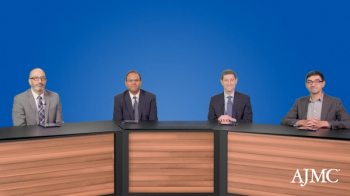
Dr Michael Wang on Finding Chemo-Free Therapies for Mantle Cell Lymphoma
To avoid the toxicities associated with use of chemotherapy, there has been progress in developing and utilizing chemotherapy-free therapies to treat mantle cell lymphoma, said Michael Wang, MD, professor in the Department of Lymphoma and Myeloma at MD Anderson.
To avoid the toxicities associated with use of chemotherapy, there has been progress in developing and utilizing chemotherapy-free therapies to treat mantle cell lymphoma, said Michael Wang, MD, professor in the Department of Lymphoma and Myeloma at MD Anderson.
Transcript
Why is it important to find chemotherapy-free therapies for patients with mantle cell lymphoma?
Actually, this is a very great question, and the reason is mainly toxicity. Because many chemotherapies, they directly attack the DNA of the cell—they break up the DNA. And when they are attacking, when you use the chemotherapy, the chemotherapy is treating all over, circulating in the blood, therefore it does not only attack the lymphoma cells. It can attack the regular bone marrow cells, making the patient neutropenic and increasing infections. And some patients even die from chemotherapy because of the low blood counts from the chemotherapy, secondary infections, and all that.
But even long-term—this is the short-term acute toxicity—the longer-term toxicities are secondary malignancies. Sometimes after 1 prior line of therapy, it may be as high as 15% to 20% of the people who are in remission for years to come, because the DNA of the normal cells was also attacked with the chemotherapy, so years later they have a therapy-related secondary malignancy. Some of them are very fatal, and they could be lung cancer, they could be MDS [myelodysplastic syndrome], they could be leukemia, they could be pancreatic cancer. So, the toxicity is just too much.
Chemo-free therapy, rather mainly targeted therapies, they target not directly on the DNA but they really target a cell component. For example, ibrutinib targets the Bruton tyrosine kinase inhibitor—it’s one of the best chemo-free therapies ever developed. So, chemo-free therapies, a lot of people think “chemo-free therapies are very tough and very effective, how about the targeted therapies?” The targeted therapies, although they are, oftentimes, used alone, sometimes 1 single PO [oral] can match several drugs on chemotherapy. Not only is the toxicity is the issue, the efficacy is being much dramatically elevated, improved with a targeted therapy and there are rational combinations.
Therefore, for a better efficacy and to stay away from the toxicity, and especially the long-term toxicity, we advocate chemo-free drugs, chemo-free agents. Treating a patient chemo free has long been the dream of all hematologists and oncologists. And we are so lucky that we have soon many chemo-free agents to use.
Newsletter
Stay ahead of policy, cost, and value—subscribe to AJMC for expert insights at the intersection of clinical care and health economics.












































